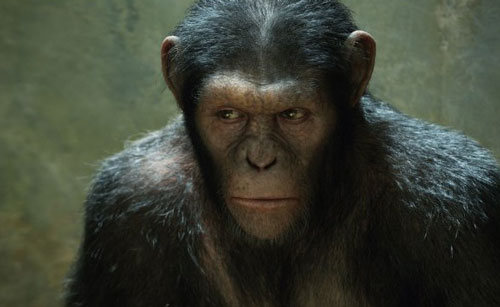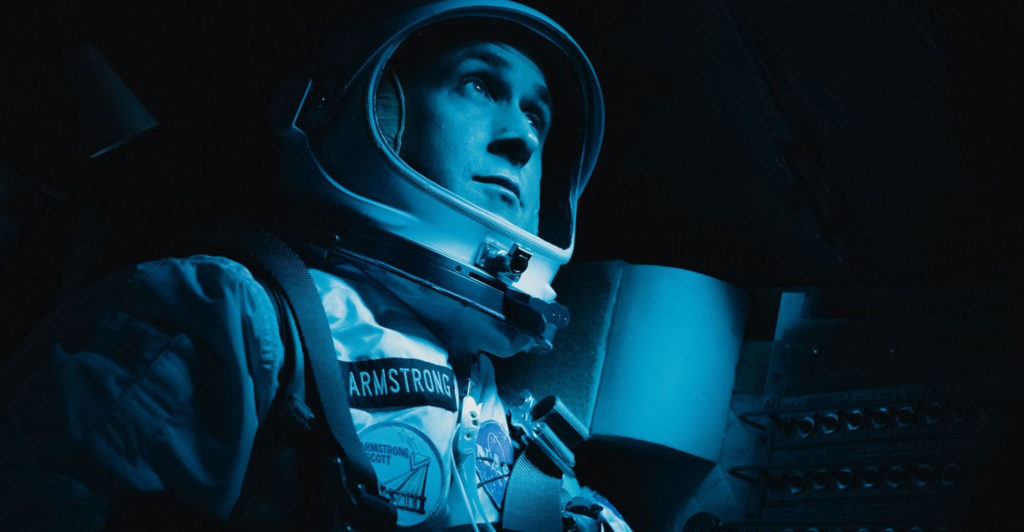
Andy Serkis has been called a 21st century Boris Karloff for his ability to bring a CGI creature to life through his motion capture performances. It’s not the computer imagery that sold audiences on memorable creations like Gollum in the Lord of the Rings films or King Kong, but Serkis’s acting under the technical wizardry.
In Rise of the Planet of the Apes, his best performance yet is fused with some convincing special effects trickery to create perhaps one of the most memorable apes on film to date. His Caesar is as poignant a creation as Karloff’s monster in Frankenstein, a misunderstood and ill-used creature that puts its tragedy on display through body language. It is a remarkable piece of physical acting and the film would have been poorer without it.
Rise is sort of a prequel to and reboot of the Planet of the Apes franchise. The film’s early scenes show a young scientist (James Franco) desperately scrambling for a cure to Alzheimer’s disease in the hope of bringing his father back from oblivion.
After a lab tragedy involving one of the chimps used in the drug trials, the project is shuttered and the apes are put down. Will Rodman manages to rescue one of them, a new-born son to one of the chimpanzees given some of the drug. Caesar, as he is dubbed, is a super-intelligent primate who soon comes into conflict with his human handlers and plots a rebellion.

Rise of the Planet of the Apes has more heart and intelligence than its B-grade premise and awkward title suggest. At its heart, it’s a classic Promethean tale in the mould of Frankenstein. But it has an underlying poignancy in its first half that you don’t often find in a Hollywood blockbuster as it sketches out the relationships between its apes and its humans.
The ways that primates are like humans and different from them is a subject that has fascinated evolutionary theorists, anthropologists, biologists and artists for centuries. We suspect that apes are the creatures that have the most to reveal to us about ourselves.
But primates — creatures intelligent enough in some species to be self-aware — often pay a terrible price for our curiosity. Rise of the Apes is running on US cinema screens at the same time as the documentary Project Nim, which tells the story of a chimp raised as a human and taught sign language in a misguided linguistic experiment.

Much like Caesar, Nim gets shunted around between foster homes and labs when he becomes unmanageable. Unlike Caesar, he doesn’t become a monkey Spartacus.
Caesar’s primate companions — a selection of mistreated lab chimps, orang-utans and gorillas — are among the most convincing CGI animals ever created. Rise of the Planet of the Apes creates so much empathy for its primates that you’ll root for them until the rousing action scenes that bring the film to its conclusion.
The human characters are the weak link in the film. Though the relationship between the arrogant yet well-meaning young researcher played by Franco and his father (John Lithgow) is tender and well realised, most of the other human characters are paper-thin caricatures. There’s the evil CEO who only cares about money, a mean-spirited neighbour, a sociopathic animal handler and a pointless love interest for Rodman, all of which drift in and out of focus without leaving too much of an impression.
Rise of the Planet of the Apes trailer (via YouTube):
http://www.youtube.com/watch?v=LaK6khs8aMw
Luckily for the monkeys, most of the humans in the film are as intelligent as they are sympathetic. There are a few scenes where it seems to take disappointingly little brain power for Caesar and his companions to outwit them. As the film closes with an image nearly as haunting as the closing frames of the original Planet of the Apes, you can’t help thinking that the humans had it coming. — Lance Harris, TechCentral
- Subscribe to our free daily newsletter
- Follow us on Twitter or on Facebook




